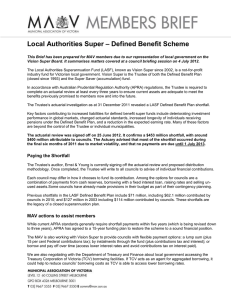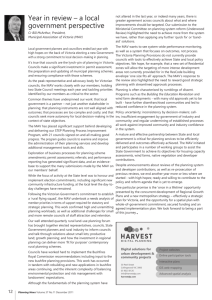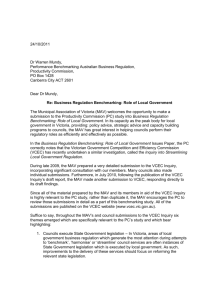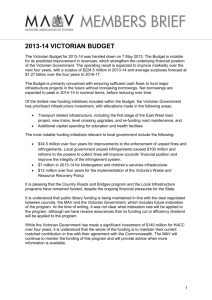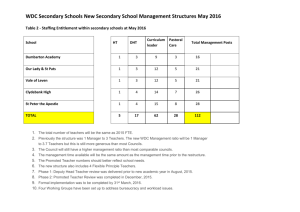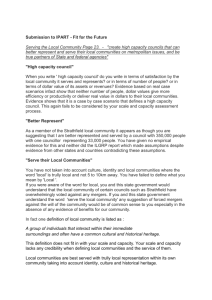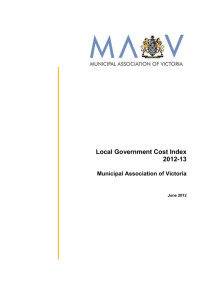About the Defined Benefit Superannuation Shortfall
advertisement
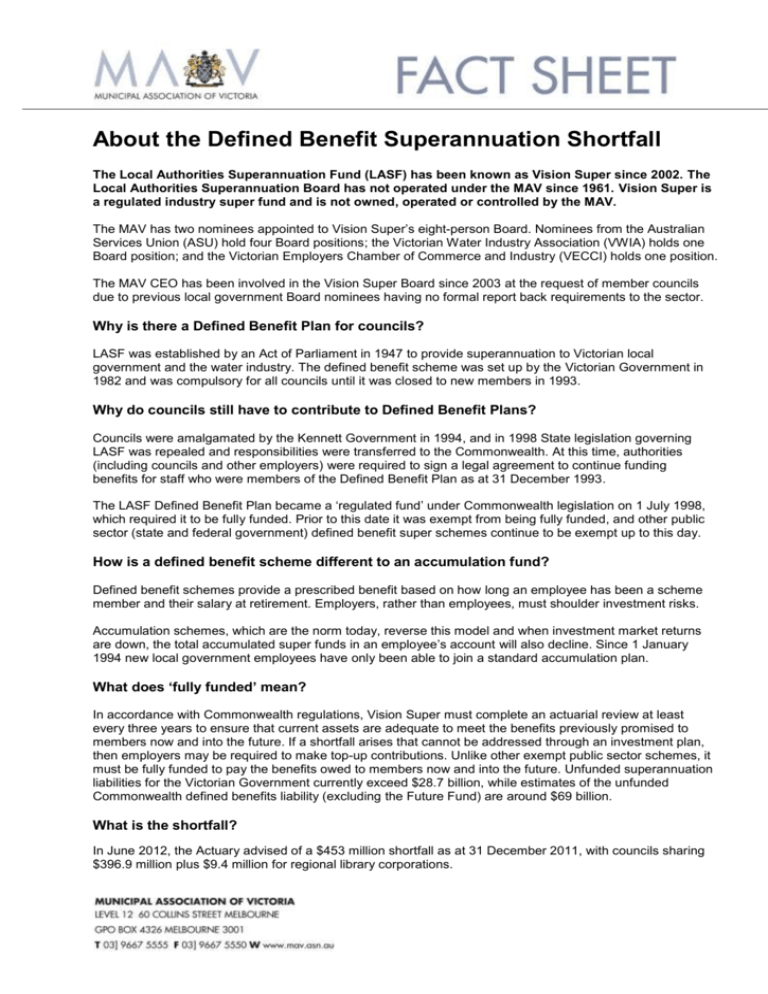
About the Defined Benefit Superannuation Shortfall The Local Authorities Superannuation Fund (LASF) has been known as Vision Super since 2002. The Local Authorities Superannuation Board has not operated under the MAV since 1961. Vision Super is a regulated industry super fund and is not owned, operated or controlled by the MAV. The MAV has two nominees appointed to Vision Super’s eight-person Board. Nominees from the Australian Services Union (ASU) hold four Board positions; the Victorian Water Industry Association (VWIA) holds one Board position; and the Victorian Employers Chamber of Commerce and Industry (VECCI) holds one position. The MAV CEO has been involved in the Vision Super Board since 2003 at the request of member councils due to previous local government Board nominees having no formal report back requirements to the sector. Why is there a Defined Benefit Plan for councils? LASF was established by an Act of Parliament in 1947 to provide superannuation to Victorian local government and the water industry. The defined benefit scheme was set up by the Victorian Government in 1982 and was compulsory for all councils until it was closed to new members in 1993. Why do councils still have to contribute to Defined Benefit Plans? Councils were amalgamated by the Kennett Government in 1994, and in 1998 State legislation governing LASF was repealed and responsibilities were transferred to the Commonwealth. At this time, authorities (including councils and other employers) were required to sign a legal agreement to continue funding benefits for staff who were members of the Defined Benefit Plan as at 31 December 1993. The LASF Defined Benefit Plan became a ‘regulated fund’ under Commonwealth legislation on 1 July 1998, which required it to be fully funded. Prior to this date it was exempt from being fully funded, and other public sector (state and federal government) defined benefit super schemes continue to be exempt up to this day. How is a defined benefit scheme different to an accumulation fund? Defined benefit schemes provide a prescribed benefit based on how long an employee has been a scheme member and their salary at retirement. Employers, rather than employees, must shoulder investment risks. Accumulation schemes, which are the norm today, reverse this model and when investment market returns are down, the total accumulated super funds in an employee’s account will also decline. Since 1 January 1994 new local government employees have only been able to join a standard accumulation plan. What does ‘fully funded’ mean? In accordance with Commonwealth regulations, Vision Super must complete an actuarial review at least every three years to ensure that current assets are adequate to meet the benefits previously promised to members now and into the future. If a shortfall arises that cannot be addressed through an investment plan, then employers may be required to make top-up contributions. Unlike other exempt public sector schemes, it must be fully funded to pay the benefits owed to members now and into the future. Unfunded superannuation liabilities for the Victorian Government currently exceed $28.7 billion, while estimates of the unfunded Commonwealth defined benefits liability (excluding the Future Fund) are around $69 billion. What is the shortfall? In June 2012, the Actuary advised of a $453 million shortfall as at 31 December 2011, with councils sharing $396.9 million plus $9.4 million for regional library corporations. The Actuary advised that most of the shortfall occurred during the final six months of 2011 due to market volatility, and that this outcome could not have been foreseen. The Actuary has attributed the shortfall to: Lower than expected market investment returns (responsible for just over 50% of the shortfall) Reduction in expected future earning rates from 8.5% pa to 7.5% pa (around 25% of the shortfall) Salaries rising in excess of actuarial assumptions (around 8% of the shortfall) Increased longevity of pensioners. How will councils pay it back? No repayments are due until 1 July 2013. The MAV has worked with Vision Super to reach an agreement with APRA for the shortfall to be repaid over 15 years rather than the regulator’s required five years. Each council will differ in how it funds its contribution. Options include payments from cash reserves, borrowing with a fixed interest loan, revising budgets to reduce non-core services, raising rates and selling un-used assets. Can councils withdraw from the defined benefit scheme? In 1998 State legislation was introduced and councils were required to sign a legally binding agreement to continue funding defined benefits for staff that were part of the scheme prior to its closure in 1993. A council would need to successfully negotiate with each of its existing defined benefit members and pensioners to reach agreement on a pay-out in lieu before it could withdraw from the Plan. This option could be more costly for communities than top up payments when there is a shortfall. The Defined Benefit Plan is in run-off as members retire. When the scheme closed in 1993 it had almost 38,000 defined benefit members and 7,500 lifetime pensioners. This has since reduced to 4,949 defined benefit members still working for authorities (with an average age of 54 years) and 5,132 lifetime pensioners (with an average age of 79 years). Liabilities will continue to reduce over the next 20 years. What action is the MAV taking? A taskforce of councillors and council officers was established by the MAV in 2012. Recommendations released in December 2012 include access to cheaper borrowing rates, reviewing the methodology and budget allocations for shortfalls, waiving ancillary government costs on shortfall payments, regulatory reforms, and greater awareness of wages and investment returns that can influence the liability. Ongoing negotiations with the Department of Treasury and Finance to access borrowing capacity for councils at a cheaper rate through the Treasury Corporation of Victoria has also resulted in a joint procurement program for councils. We’re seeking a transition back to a state-managed scheme, which would remove the requirement to ensure full funding and would return the LASF Defined Benefit Plan to an equal footing with other exempt public sector schemes. This outcome will require support from both the Victorian and Australian Government’s to repeal the federal legislation and introduce state legislation to give effect to this change. Other actions being pursued by the MAV that had input from the taskforce include discussions with the Australian and Victorian governments to remove the 15 per cent contribution tax and WorkCover liabilities associated with defined benefits call-ins. This would save councils over $82 million.
